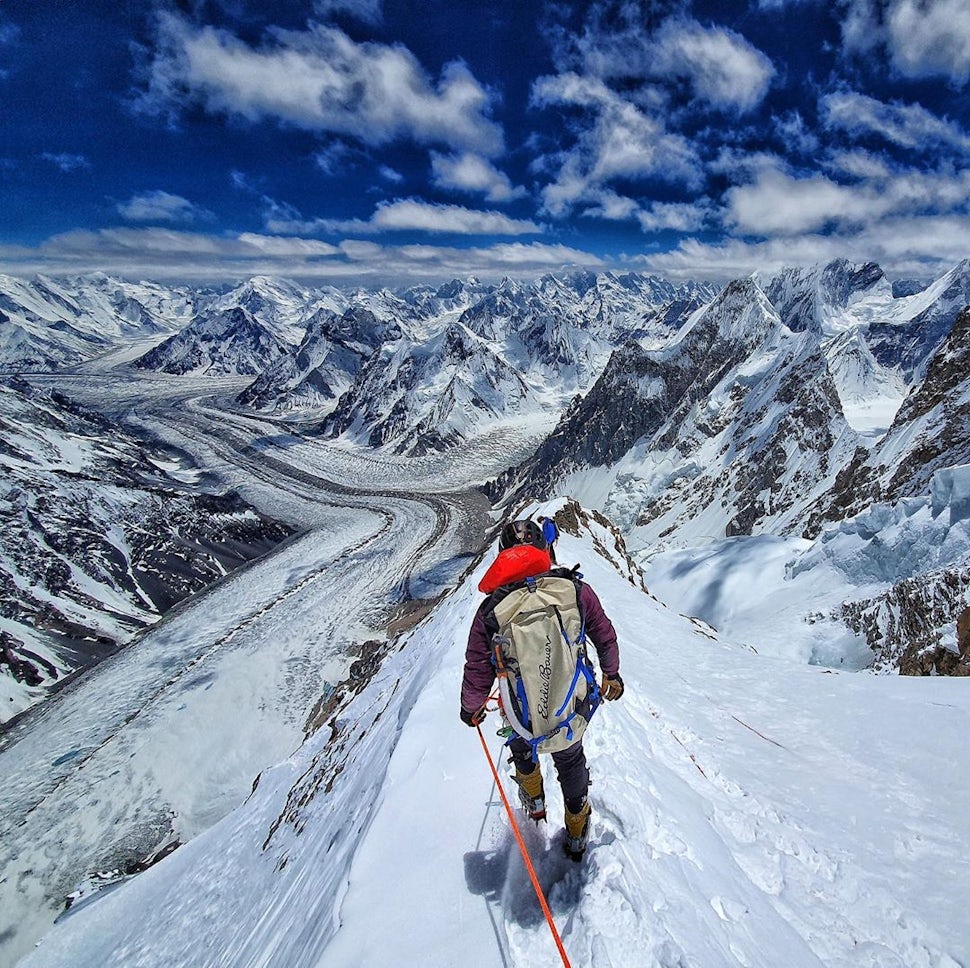Adrian Ballinger and Carla Perez Summit K2 Without Oxygen
Big news in the mountaineering world!

Professional mountaineers Adrian Ballinger and Carla Perez just summited K2, the second-highest mountain in the world, and one of the most dangerous, without supplemental oxygen. This is an incredible feat.
Separately, and shortly before their summit success, Nirmal Purja and his team of sherpas also summited K2, a huge win for his attempt to summit all 14 peaks above 8,000 meters in just 10 months.
Sponsored by Eddie Bauer, Ballinger and Perez climbed the Cesen route, along with their teammates, photographer Esteban "Topo" Mena and Pemba Gelje and Palden Namgye; all of who carried and used supplemental oxygen for safety. A fortunate weather window opened up yesterday and they went for it, and succeeded.
Adrian has previously summited Everest twice without supplemental oxygen. (He has had far more successful Everest summits with oxygen.) In April, Carla became the first South American woman to summit Everest without supplemental oxygen.
I had the opportunity to be connected with Adrian and his guiding company, Alpenglow Expeditions, back in March and we talked a lot about his decision-making process when in high altitude. Lack of oxygen obviously has a huge impact on your brain. Adrian said that once he reaches a certain altitude, his cognitive ability reverts back to that of about a 2-year-old. Mumbling and moments of blacking out are common.
Let's think about that. Imagine yourself on an incredibly cold, incredibly windy, super-exposed mountain ridge making decisions that will either keep you alive or not...and your brain is not functioning as an adult brain. Think about using every ounce of energy you have not only to stand up straight in incredibly volatile weather, but also move forward, while maintaining your tried-and-true systems, safely.
Even with supplemental oxygen, the human body has a limited amount of time it can survive in that elevation. Above 26,000 feet is often referred to as the "Death Zone". Movement is severely slowed down, you can't digest food, you can't sleep, and your reaction times are slowed way down.
On top of the physical and psychological effects of being in extreme elevation, K2 has a section of the climb called "The Bottleneck", a narrow couloir about 400 meters from the summit that is overhung by seracs (blocks of glacier ice) from an ice field east of the summit. The seracs can release sporadically, wiping out an area the climbers have to walk along to reach the summit. Climbers are exposed under the seracs in the Bottleneck for about 100 meters. In that elevation you're not moving fast, and the 100 meters can take you hours to cross. Add that to the the typical unpredictability of weather in mountains and it's no wonder why K2 is considered one of the most dangerous mountains to climb in the world.
To move forward safely, Adrian has a well-trusted doctor in his ear communicating with him the whole way, listening to his response time, clarity of speech, etc. This is the same doctor that encouraged him to turn around 500 feet from the Everest summit on his first attempt sans oxygen. He listened. For the summit of K2, Adrian and Carla's three other teammates had supplemental oxygen, just in case. Lots and lots and lots and lots of preparation went into this K2 attempt. These two have tested the human body and trusted Mother Nature in incredible ways.
A massive congratulations to Adrian, Carla and the rest of the Eddie Bauer team. You deserve all the happy tears, yummy, calorie-dense meals, and a really good bed to sleep in at K2's base. I look forward to hearing more stories from your journey upon your safe return.
Cover photo courtesy of Esteban Mena.
We want to acknowledge and thank the past, present, and future generations of all Native Nations and Indigenous Peoples whose ancestral lands we travel, explore, and play on. Always practice Leave No Trace ethics on your adventures and follow local regulations. Please explore responsibly!
Do you love the outdoors?
Yep, us too. That's why we send you the best local adventures, stories, and expert advice, right to your inbox.





